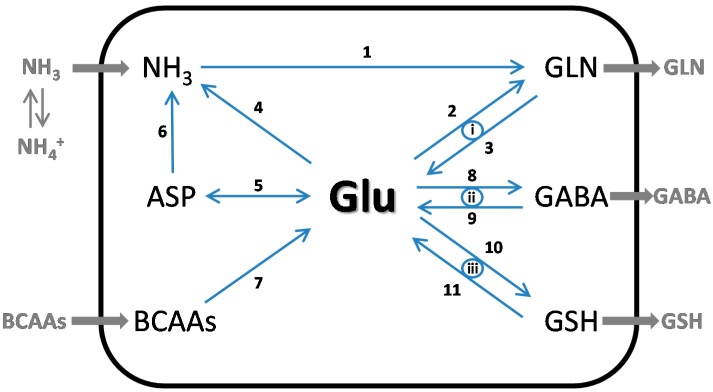Figure 2.
One-compartment model highlighting the central role of glutamate as a nitrogen buffer/bulwark in the brain. The diagram is greatly simplified to omit cellular and subcellular compartmentation of enzymes involved in maintaining nitrogen homeostasis. The gray arrows (left) indicate the major flow of nitrogen from blood to cells and then to interstitial fluids (right) irrespective of compartmentation. For simplicity other sources of nitrogen such as those involved in the transamination of glutamine and in purine and pyrimidine catabolism are omitted. Moreover, turnover of compounds in the brain associate with these pathways is likely to be relatively slow compared to that of glutamate. Ammonia enters the brain largely by diffusion of NH3. Additional nitrogen enters the brain via transport of amino acids, especially the branched-chain amino acids (BCAAs). Enzymes: 1, Glutamine synthetase (ammonia as substrate); 2, glutamine synthetase (glutamate as substrate); 3, glutaminase; 4, glutamate dehydrogenase; 5, mit and cyt aspartate aminotransferases; 6, enzymes of the purine nucleotide cycle; 7, branched-chain amino acid aminotransferases; 8, glutamate decarboxylase; 9, enzymes of the GABA shunt; 10, glutamate cysteine ligase + glutathione synthetase; 11, γ-glutamyltransferase + cysteinylglycine dipeptidase. Cycles between astrocytes and neurons: i, Glutamine cycle; ii, glutamine-GABA cycle; iii, the three amino acid components of glutathione synthesized in the astrocytes are recycled and assembled anew in the neurons.

